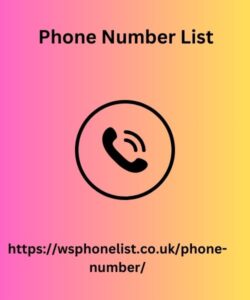Canada, a vast North American country, follows a standardized phone number format. This format consists of three primary components:
- Country Code: The international dialing code for Canada is +1.
- Area Code: This three-digit number represents a specific region or city within Canada.
- Local Number: The seven-digit number specific to a particular subscriber within the area code.
Key Area Codes in Canada
Here are some of the most Canada Phone Number Data commonly used area codes in Canada:
- Toronto: 416, 647
- Montreal: 514, 438
- Vancouver: 604, 778
- Calgary: 403, 587
- Ottawa: 613, 226
Dialing International Calls to Canada
To dial a phone number in Canada from another country, you’ll generally follow these steps:
- Dial the international access code: This varies depending on your location, but it’s often + or 00.
- Enter the country code for Canada: +1
- Dial the area code: The three-digit number representing the desired region.
- Dial the local number: The seven-digit number of the specific subscriber.
Example:
To call a number in Toronto, Canada, from the United States, you would dial: +1 416 1234567.
Mobile Numbers in Canada
Mobile phone numbers in Canada typically start with 2, 4, 5, 6, 7, or 8, followed by the area code and the seven-digit Belarus Phone Number Database local number. However, it’s important to note that mobile number formats can change over time, so it’s always a good idea to verify the specific format with your service provider or a reliable source.
Landline Numbers in Canada
Landline numbers in Canada may vary in format depending on the region. Some landline numbers might include additional digits or prefixes. If you’re unsure about the format of a landline number, it’s best to consult a local directory or contact a reliable source for accurate information.
Internet Telephony and VoIP
Internet telephony (VoIP) services have USA CFO gained popularity in Canada, offering affordable alternatives to traditional landline and mobile phone services. VoIP allows users to make and receive calls over the internet, often using a computer, smartphone, or a dedicated VoIP device.
Challenges and Considerations
- Network Coverage: Network coverage is generally good throughout Canada, but it can be limited in remote areas or during natural disasters.
- Changing Regulations: Telecommunications regulations in Canada can change over time, so it’s advisable to stay updated on the latest developments.
Conclusion
Understanding Canada’s phone number format and dialing conventions is essential for making international calls to the country. By following the guidelines outlined in this article, you can effectively communicate with individuals and businesses in Canada.

